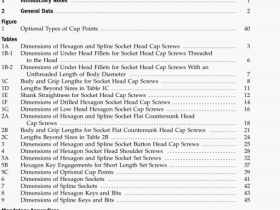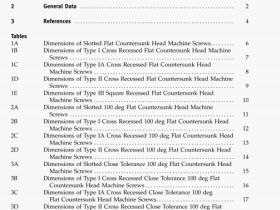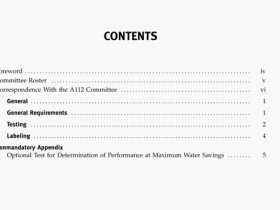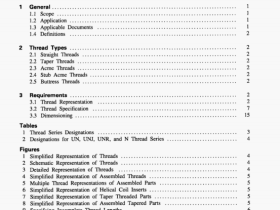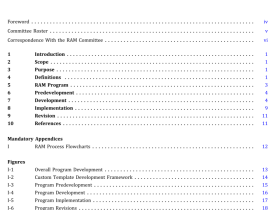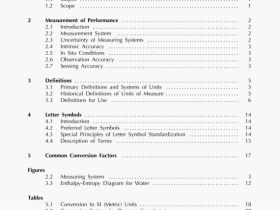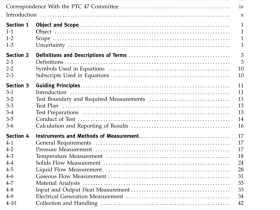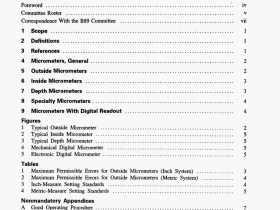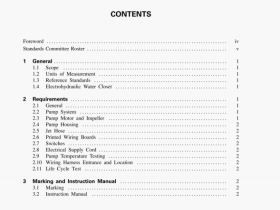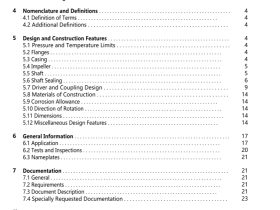ASME B89.7.1-2016 pdf download

ASME B89.7.1-2016 pdf download.Guidelines for Addressing Measurement Uncertainty in the Development and Application of ASME B89 Standards.
This Technical Report uses the term adjustments when discussing the service activities undertaken to modify the metrological characteristics of measuring equipment; the typical purpose of adjustments is to bring measuring equipment back within specified MPEs or tolerance limits. Measurements used for determining necessary adjustments to measuring equipment, if not also used either for determining reference values oras test values, are not necessarily recorded or reported in a calibration.
4.6 CaLibration ResuLts
In this Technical Report, the result of a calibration is one of the following:
(a) a reference value with an associated reference value uncertainty
(b) an artifact verification based on test values and associated test uncertainty
(c) an instrument verification based on test values and associated test uncertainty
The measurand associated with test values is conceptually different than the measurand associated with reference values, and therefore, the Influence quantities one should consider when estimating test uncertainty are typically quite different than those one should consider when estimating reference value uncertainty. Guidelines for the evaluation of measurement uncertainty in dimensional metrology are discussed in ASME B89.7.3.2, and test uncertainty is further discussed in Iso 14253-5.
4.7 SuitabiLity of the CaLibration for Subsequent Measurements
A calibration is for a specific measurand and set of conditions under which the uncertainty statement is valid (see para. 5.1.3). The use of calibration results should be carefully considered when the calibrated measuring equipment is used to obtain measurement results in a subsequent measurement. The measurand of any subsequent measurements and the associated conditions under which the measuring equipment is used need to be compared to the measurand and conditions associated with the calibration. If the measurand or measurement conditions differ from those of the calibration, additional influence quantities associated with the measuring equipment and its use in the subsequent measurement should be identified and quantified in the evaluation of the uncertainty of the subsequent measurement result.
5 DOCUMENTING MEASUREMENT UNCERTAINTY
AND METROLOGICAL TRACEABILITY IN
ASME B89 STANDARDS AND TECHNICAL
REPORTS
5.1 Minimum Information
When documenting uncertainty analyses, ASME B89 standards and technical reports should address the following information, at minimum:
(a) definition of the measurand
(b) measurement method and equipment
(c) validity conditions associated with the uncertainty analysis
(d) correlated and independent inputs
(e) documentation traceability for the length standards
(fi summary matrix for uncertainty evaluation
5.1.1 Definition of the Measurand. Proper evaluation of measurement uncertainty begins with clearly defining and understanding the measurand. For example, is the measurand evaluated as a measurement result for a work- piece feature measured on a coordinate measuring machine (CMM) or as an error produced in a CMM verification test? In many cases, standards and technical reports should go so far as to state what the measurand is not. For example, if the ASME B89 standard provides an example uncertainty analysis of the calibration result for an artifact, the text should clarify that the uncertainty analysis is not associated with a subsequent measurement result using the calibrated artifact as a reference standard.
5.1.2 Measurement Method and Equipment. The measurement method and associated equipment determine how the measurement values relate to the measurand, and understanding this relationship is the first step in establishing the contextN of the uncertainty analysis. ASME B89 standards and technical reports should include all important details of the measuring method and measurement equipment to sufficiently identify the important metrological requirements.
5.1.3 Validity Conditions. The documentation of validity conditions serves to complete the description of the “context” for the uncertainty analysis, and in doing so, describes the permissible conditions within which the uncertainty analysis is valid.
